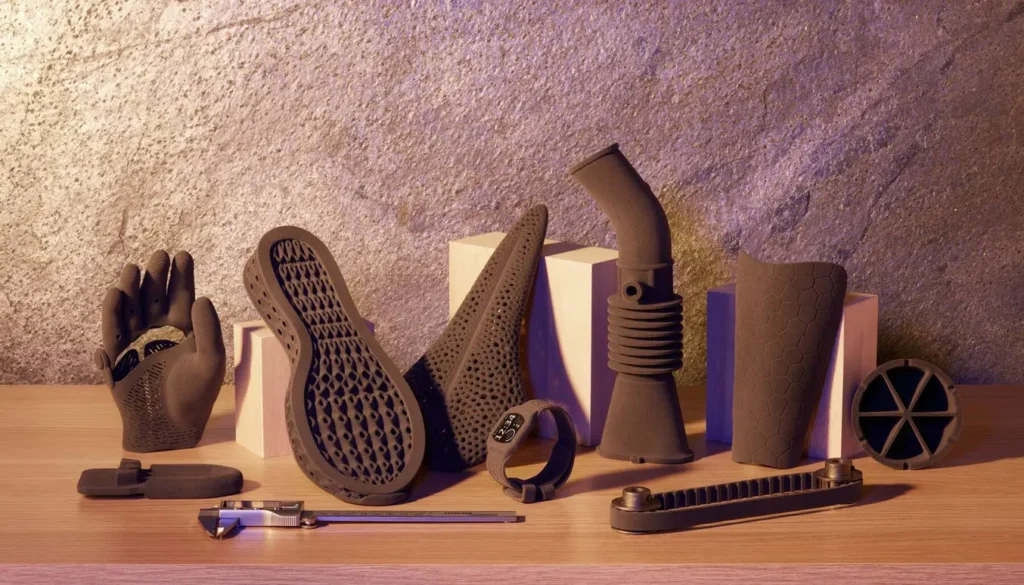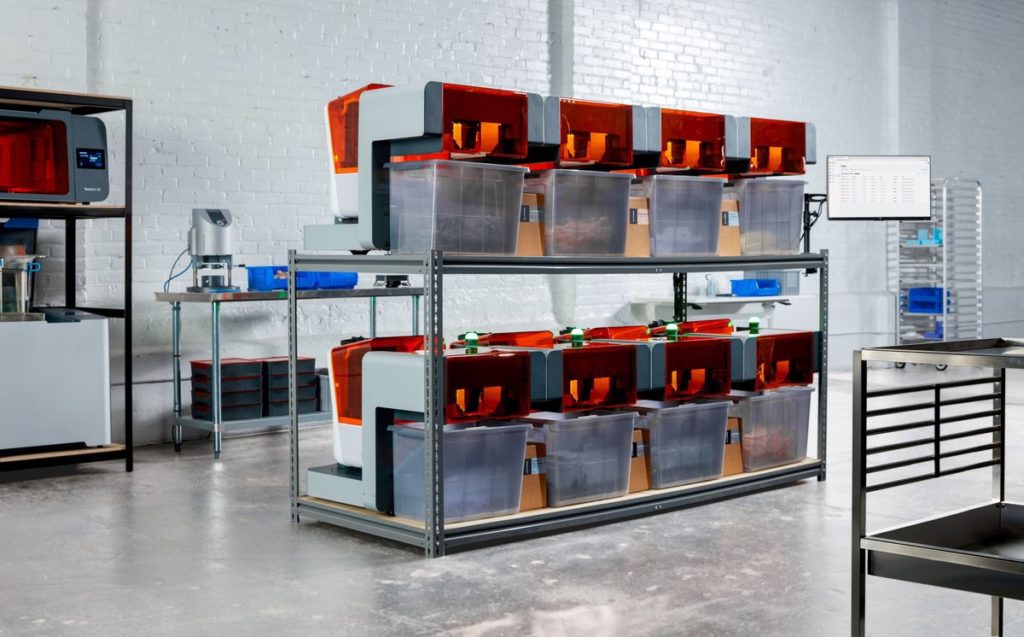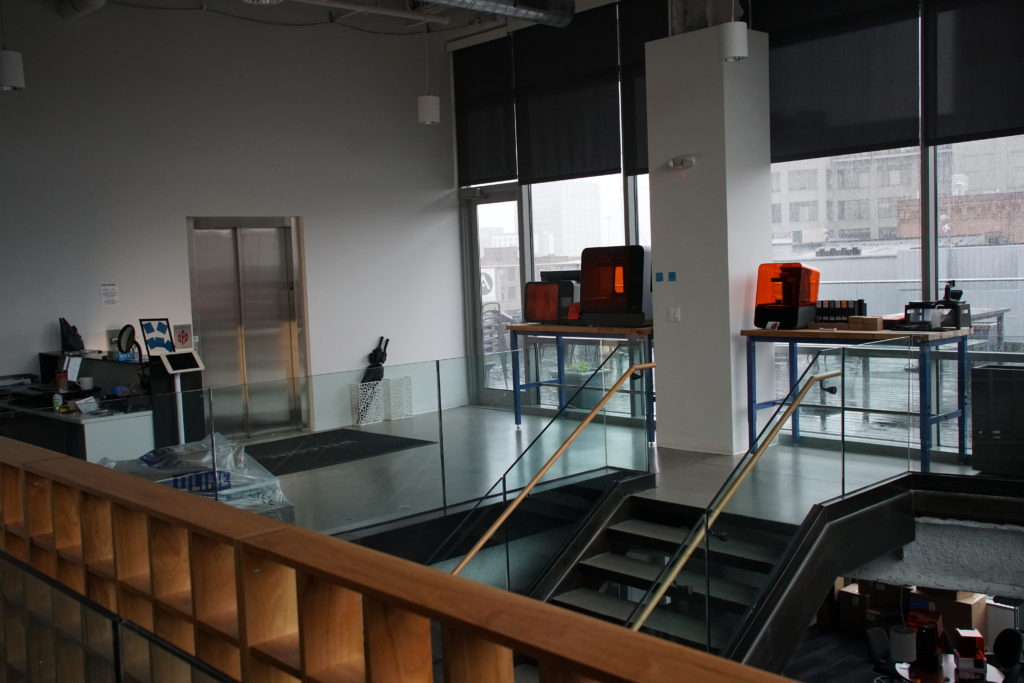Formlabs is one of the primary success stories of the 3D printing startup scene from the last era. In part, this was due to the fact that the MIT spinout was able to reduce the cost of stereolithography additive manufacturing (AM) systems to below $5,000. However, what we’ve learned in the decade since the company’s launch is that it was Formlabs’ consistent commitment to quality and user experience that really enabled the firm to grow and thrive, even while other businesses were unable to survive larger industry and economic tumult.
At the 2023 Additive Manufacturing Users Group (AMUG) Conference, we were able to catch up with Head of Sales for the Americas, Brian Nies, to discuss the firm’s current trajectory, including the release of its new automation package and flexible material for its selective laser sintering (SLS) platform.
Formlabs Soft and Flexible 3D Printing
The big launch for AMUG was thermoplastic polyurethane (TPU) for the Fuse SLS platform. Up until now, the company had only offered nylon-based powders, making TPU 90A Formlabs’ first elastomeric material. With a shore hardness of 90A, the material isn’t exactly velvet, but combines softness and flexibility with toughness and durability needed for certain applications. These include skin-safe wearables, soles, splints, orthotics, prosthetics, protective sport equipment, gaskets, seals, masks, belts, plugs, tubes, padding, dampers, cushions, and grippers, among other uses.

This is an important development for a company that takes its time to both respond to market feedback and ensure that its products are ready for market. TPU was in high demand from customers and expands the types of parts that can be made on the company’s low-cost SLS machine. Because SLS requires no support structures, there’s a greater level of geometric complexity that can be achieved with the process.
Formlabs names Radio Flyer as one early user, which has leveraged TPU 90A for in-house prototyping of handlebar grips. The company’s development process and design engineer Agostino Lobello said of the material, “The high-grip surface finish is unique compared to other 3D printed TPE/TPUs I’ve interacted with. From that standpoint, it does feel more similar to our injection molded TPE/TPU which is exciting from a prototype application. Currently, the next best alternative to this process would be a prototype tool and injecting actual TPE or other urethanes so this is both more cost and time effective.”
3D Printing Automation with Formlabs
A more elaborate example of listening to customers was the development of Form Auto, which begins shipping April 14. Available for order at $3,399, Form Auto makes it possible to remove completed parts and initiate new jobs automatically on Form 3 systems (Form 3+, Form 3B+). According to the company, customers can reduce labor by 80 percent, cost per part by 40 percent, and packaging waste by 96 percent.
Because these machines are already being used for production of prototypes, end goods, tools, in such industries as automotive, medical, dental, and jewelry, it’s easy to imagine how such a product could drive further adoption by those same users and expand to new ones as a result. Form Auto is actually an outgrowth of the Form Cell, a much more elaborate automation system for fleets of Formlabs printers announced in 2018. The company is no longer making new Form Cells at this point, but is servicing existing customers who have them.
In a way, the Form Cell was ahead of its time, anticipating far more use of printer farms than was a reality back then. The Form Auto represents a smaller scale automation solution outfitted for 3D printers on a one-to-one basis, essentially automating single printers for a more realistically sized user base.

The Form Auto system attached to a Form 3+.
“It’s in the same general class of product as the Form Cell,” Nies said. “We went back to the drawing board. We made this expensive, high-end product and considered what would happen if we thought about automation in a different way—if we really tried to simplify everything and make the simplest, most accessible form of automation. What would that enable? That’s kind of an open question and we’re really excited to be in front of that.”
Nies pointed out the production of dental arches as a classic use case for the Form Auto, where similar materials are being used on a fleet of Form 3 machines, with jobs being processed continuously. Some users are looking to the technology to increase throughput, while others are simply reducing operator interactions with the machine.

A fleet of Form 3+ machines with Form Auto.
“Basically, you can use our new Fleet Control software to queue up a whole bunch of jobs and send them to your printer continuously. Once you get it set up and primed, it’ll just keep going and you don’t have to come back or touch it to start the next job until it’s time to swap resin cartridges,” Nies said. With the company’s high-volume cartridges, filled with five liters of resin, most customers are able to print as much as they need to before returning to the machine.
While there are plenty of low-cost machines being used to run printer farms, Formlabs represents an important leader in the segment. By combining value with quality and ease-of-use, the company has created the ideal machine for running fleets of 3D printers. For that reason, customers like Hasbro are able to leverage Formlabs systems to mass produce products.
Formlabs’ Growth
“Users have definitely expanded the concept of a print farm. There are a lot of users running multiple printers and a good amount of companies running large print farms. This is why we’re really moving to automation. It’s a big request from people when they start to expand their labs. Many companies have the desire to automate decentralized, multiple units so that they can have lots of different jobs running and they’re not beholden to one machine.”
Because of the increased number of users with multiple machines, the Fuse 1+ has been successful among Formlabs’ client base. The machine features a more powerful laser, allowing it to operate at twice the speed, as well as a larger build volume. This makes it possible to increase throughput.

Formlabs printers at the new headquarters at Milwaukee’s historic Third Ward. Image courtesy of Formlabs.
This is in turn fueling the company’s growth overall. Formlabs has expanded its Boston headquarters and opened an office in Milwaukee, Wisconsin last fall. Whereas most of the R&D work is performed in Boston, the Midwestern office allows the company to better serve its customers in the region. It is ideally situated for working with automotive and medical clients.
While the market may have slowed to some extent, due to fears of a looming recession, Formlabs is one company that hasn’t slowed considerably. As trepidation recedes and the economy picks up again, the firm will be able to accelerate once more. This will certainly mean more materials and automation from Formlabs, but one wonders if it could also include acquisitions or the eventual release of a new 3D printing platform. If something like a low-cost metal 3D printer is in the works from the company, it surely won’t be released until it’s perfectly ready for the world.
Subscribe to Our Email Newsletter
Stay up-to-date on all the latest news from the 3D printing industry and receive information and offers from third party vendors.
Print Services
Upload your 3D Models and get them printed quickly and efficiently.
You May Also Like
3D Printing News Briefs, June 11, 2025: Sustainability, Automotive Tooling, & More
We’re starting with sustainability news in today’s 3D Printing News Briefs, as EOS has strengthened its commitment on climate responsibility, and Zestep is making 3D printing filament out of eyewear...
3D Printing 50 Polymer Stand-In Parts for Tokamaks at the PPPL & Elytt Energy
Of all the world’s things, a tokamak is one of the hardest, most complex, expensive and exacting ones to make. These fusion energy devices make plasma, and use magnets to...
3D Printing News Briefs, May 17, 2025: Color-Changing Materials, Humanoid Robot, & More
We’re covering research innovations in today’s 3D Printing News Briefs! First, Penn Engineering developed 3D printed materials that change color under stress, and UC Berkeley researchers created an open source,...
Firehawk Aerospace Partners with JuggerBot 3D, Gets $1.25M from AFWERX for 3D Printed Propellants
Texas-based Firehawk Aerospace, an advanced energetic materials firm that works with aerospace and defense applications, announced a strategic partnership with JuggerBot 3D, an Ohio-based large-format 3D printer manufacturer. Together, the...

































